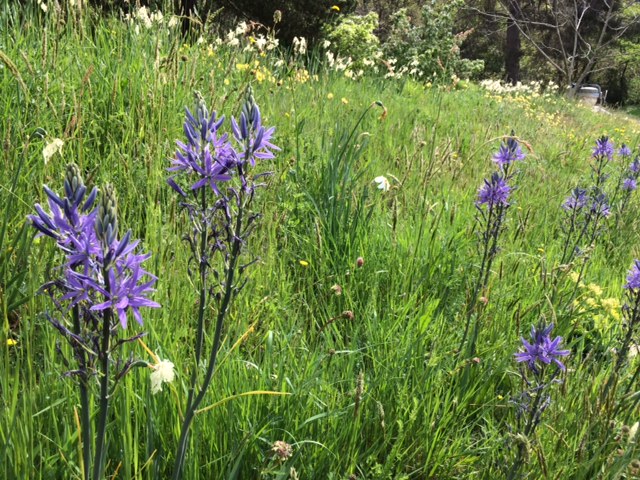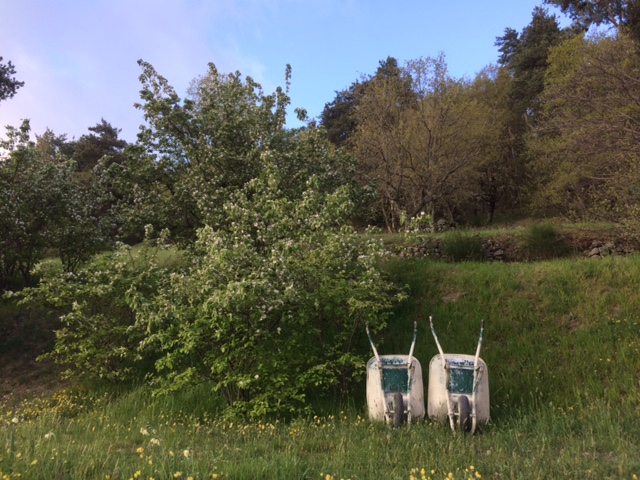Naturalizing camassias
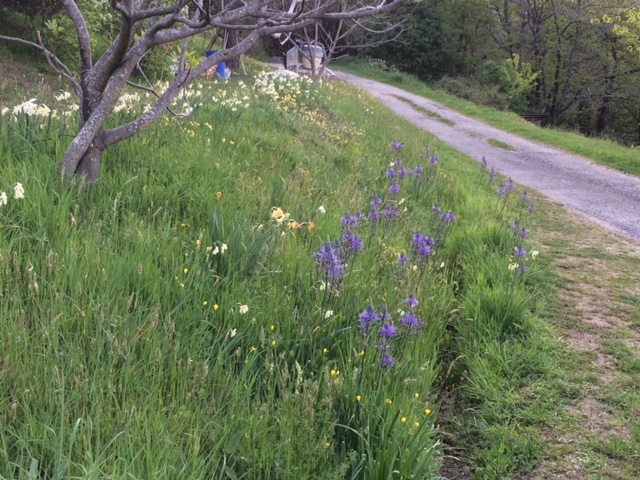 Some people call it naturalizing bulbs. I call it finally getting it right.
Some people call it naturalizing bulbs. I call it finally getting it right.
Think about it. The word natural to me just means it is in the right place and happy. And once they are happy they can get on with growing and returning each year. And looking, well, natural.
I failed the basic rule of bulb growing with Camassia in the past. I didn’t do my research. I didn’t even know they were from North America. Nor that they prefer moist conditions.
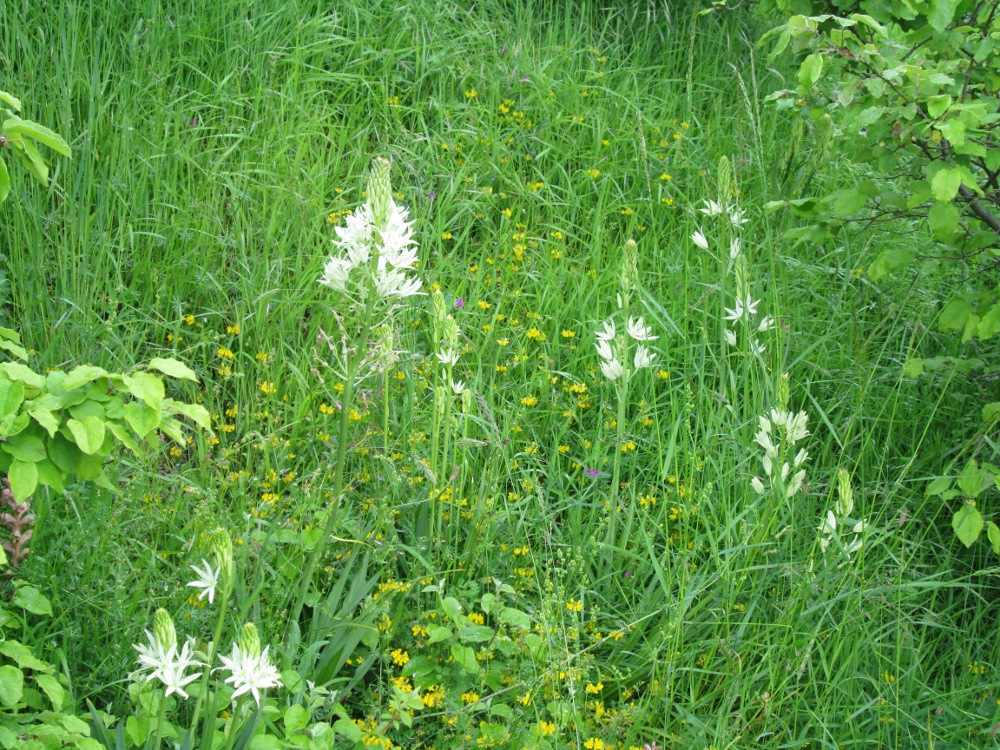 So what a waste of investment and effort – I planted them at the base of the quinces in the east garden one year. And in the dry north side of the barn another. These white ones went into the dry bank in 2013 and flowered beautifully. Once. I’ve never seen them since.
So what a waste of investment and effort – I planted them at the base of the quinces in the east garden one year. And in the dry north side of the barn another. These white ones went into the dry bank in 2013 and flowered beautifully. Once. I’ve never seen them since.
No wonder they didn’t sparkle what with the parched conditions. And then finally I did my homework and got it right.
 I love this website. It’s so interesting and practical. In fact I’m going to lift the whole section on Camassias, as they spell it out better than me.
I love this website. It’s so interesting and practical. In fact I’m going to lift the whole section on Camassias, as they spell it out better than me.
https://www.johnscheepers.com/flower-bulbs-index/camassia.html
A valuable Pacific Northwest U.S. native that’s been cultivated commercially in the Netherlands for a long time, Camassia is best grown in moist, fertile soil in full sun to partial sunlight. Unlike most bulbs, Camassia prefers soil that has a bit more moisture. This stands to reason since it enjoyed soil with good moisture retention in the plains, slopes and foothills west of the Cascade Mountains.
Deer- and rodent-resistant, Camassia forms ever substantive clusters of linear strappy foliage from which upright racemes studded with dozens of six-petaled, 2”, star-shaped flowers, opening sequentially from the bottom to the top. Depending on the variety, the flowers are white, ivory, blue or purple, each with pretty yellow anthers. Commonly known as the Wild Hyacinth, Camass, Quamash or Leichtlin’s camass, it’s an incredibly valuable genus since it naturalizes well when left undisturbed in a good spot, and since it blooms in the blank period between the big Narcissus and Tulip spring show and the big summer show when perennials and annuals hit their colorful strides. As it matures over time, when it’s happy where it’s planted, it naturalizes by bulb offsets (called bulbils: baby bulbs on the sides of the mother bulb you’ve planted).
As if that weren’t enough, it’s also a good cut flower. Back around 1800, history reports that Sacajawea cooked Camassia bulbs to feed the Lewis and Clark expedition. We do not recommend this: a friend of ours tried this in Holland and found the pasty mush rather repulsive. (Plus, bulbs in the wild can be mistaken as Camassia when in fact, they are a poisonous look-alike.)
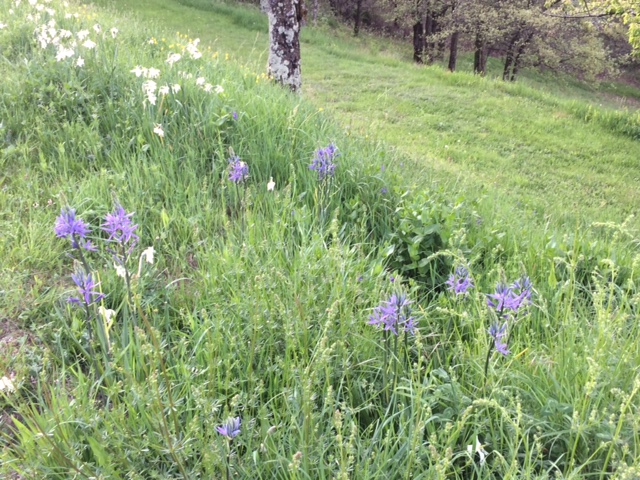 So that’s me told. Moisture. I need moisture.
So that’s me told. Moisture. I need moisture.
This farm is not big on damp. In fact having not had rain for five weeks now, I can’t even remember what it looks like. But I do have a sneaky trick. Underground springs.
There are at least five I know of around this farm. And one happens to be right at the base of the bank along the east garden. So that is where I shoved fifty Camassias last autumn.
And up they came. Happy, chirpy and they even look like they might make a return next year as well. I do wish I hadn’t planted them in so straight-ish a row. But that’s the moisture thing. Further up the bank it’s dry. So they are staying low.
I might even build up my stocks to get enough for cut flowers. I will eschew the eating. I don’t fancy repulsive mush. Thank you John Sheepers for the tip.
